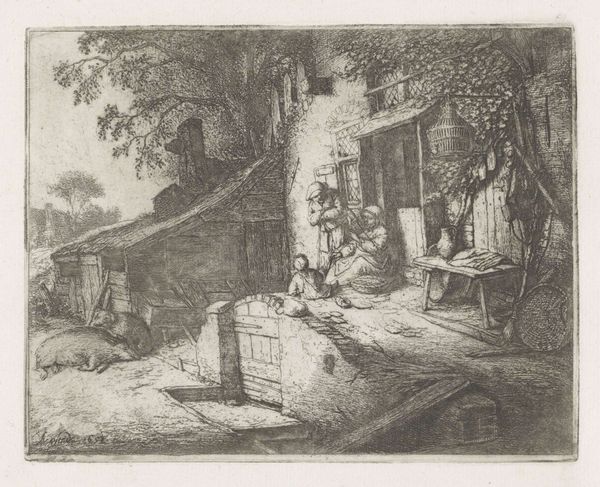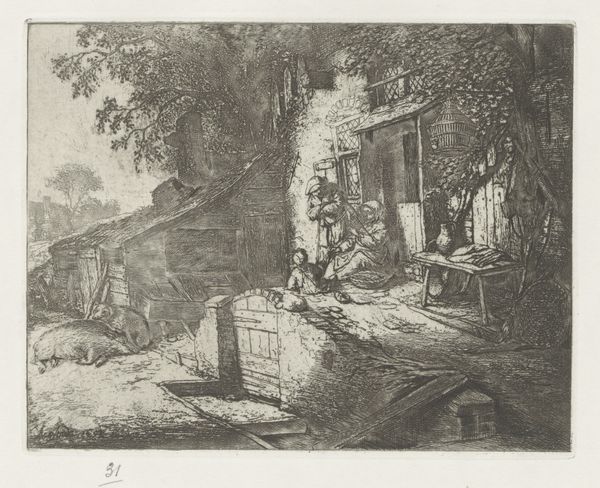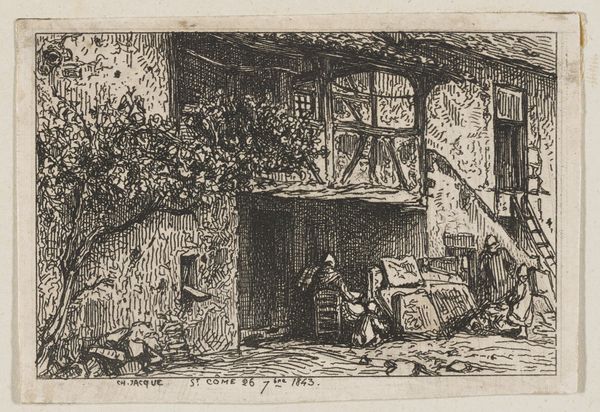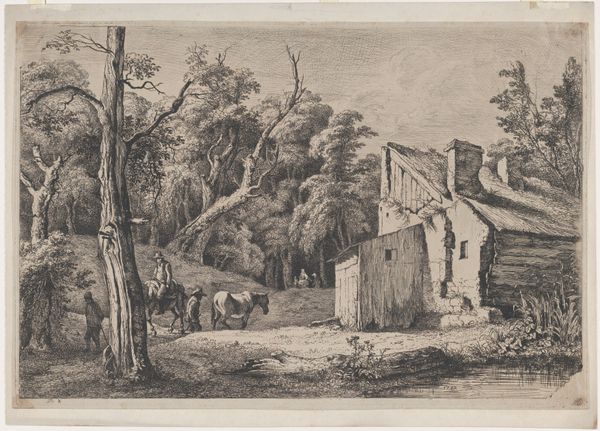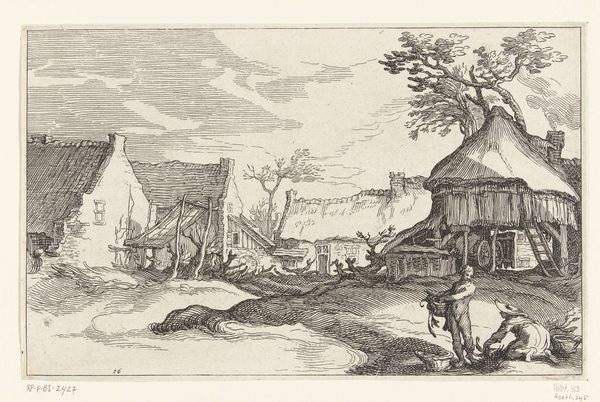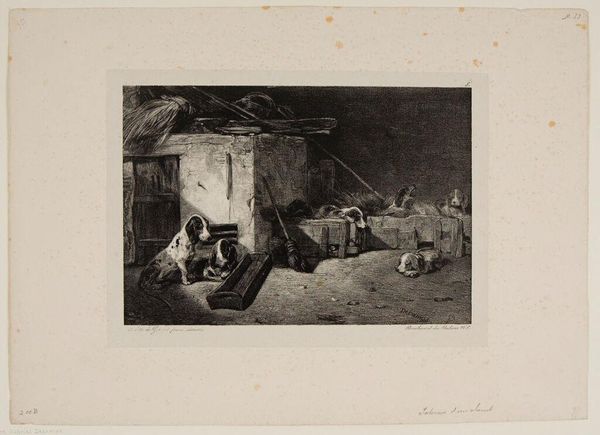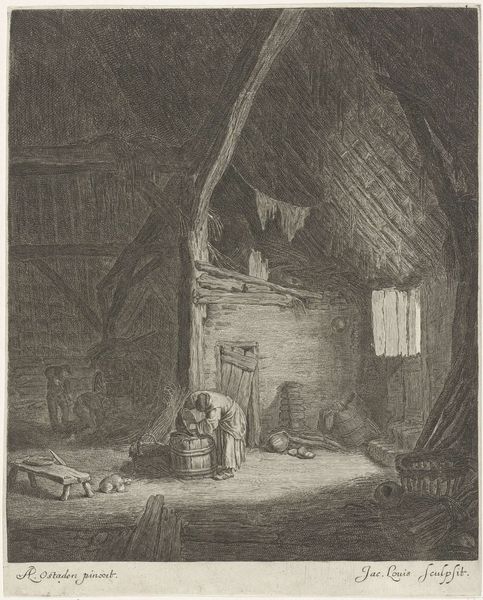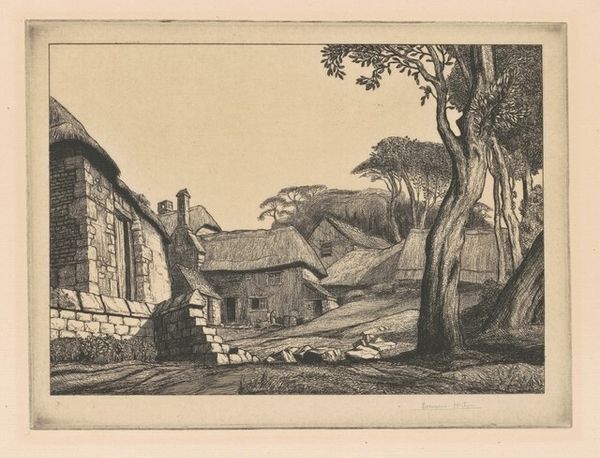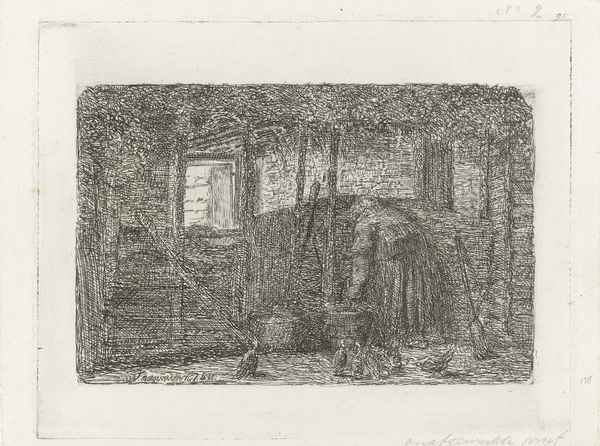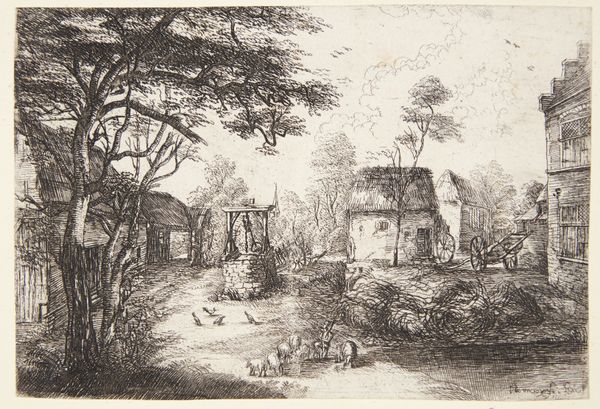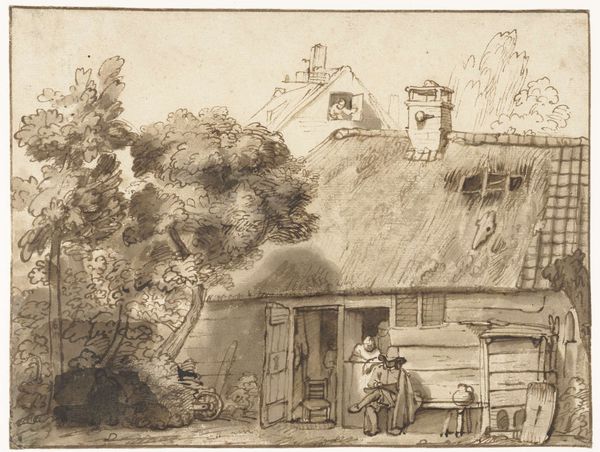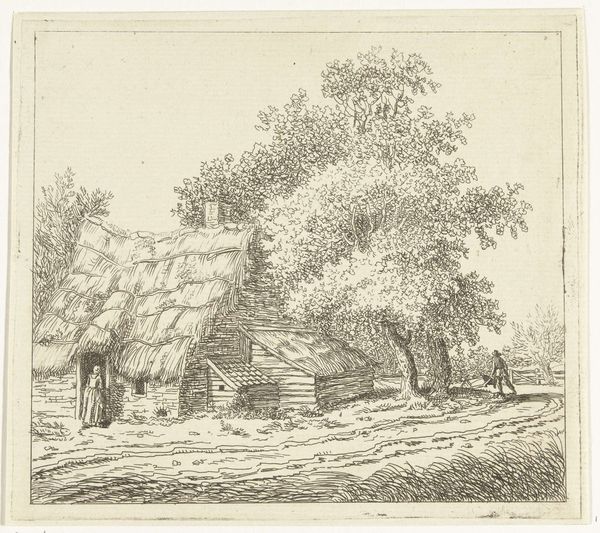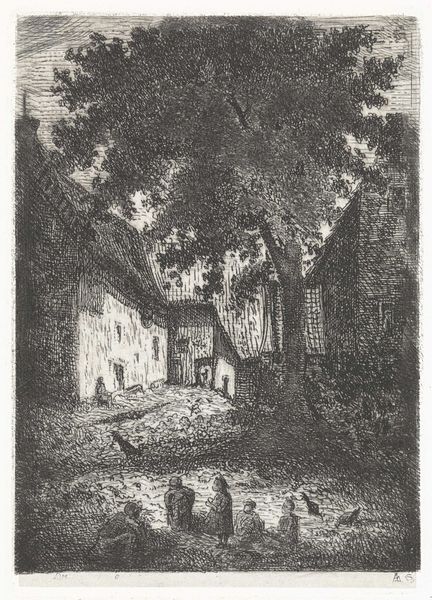
drawing, print, etching, paper
#
drawing
#
dutch-golden-age
# print
#
etching
#
landscape
#
figuration
#
paper
#
pen-ink sketch
#
genre-painting
Dimensions: 135 × 173 mm (image); 139 × 176 mm (plate); 166 × 218 mm (sheet)
Copyright: Public Domain
Editor: Here we have Adriaen van Ostade's "The Woman Spinning" from 1652, an etching printed on paper. It feels very intimate and detailed, despite being a relatively small print. The contrast between light and shadow creates a strong sense of depth. What do you see when you look at the piece? Curator: Primarily, I am struck by the masterful use of line. Observe how the artist employs varying densities and directions of lines to simulate textures—from the rough thatch of the roof to the delicate folds of the woman’s dress. Note how the structure is reinforced by hatching, suggesting both form and tonal value. Editor: That's fascinating. So, the focus is really on the visual elements themselves, like the lines and textures? Curator: Precisely. Consider the formal relationships at play. The composition guides the eye through a series of interconnected shapes. For example, the diagonal created by the roofline leads us directly to the figures and their activity. Do you see how the composition avoids easy symmetries or clear-cut arrangements? Editor: Yes, the slight asymmetry makes it more dynamic, I think. Instead of everything being perfectly balanced, there's a sense of movement and activity. Curator: Precisely, we must remember the material itself contributes meaning. An etching allows for the multiplication of an image. The interplay between the figure and the forms illustrates how these visual structures determine the effect and significance. Editor: I see what you mean. By analyzing those intrinsic elements, we understand the art on its own terms, outside historical context, right? I guess I was getting too caught up in wondering about who this woman was and what her life was like! Curator: Indeed. By appreciating the work's inherent structure and composition, we can derive a deeper sense of the artist's intent. Editor: Thank you. It shifted my understanding towards looking at the "how" instead of the "what."
Comments
No comments
Be the first to comment and join the conversation on the ultimate creative platform.
